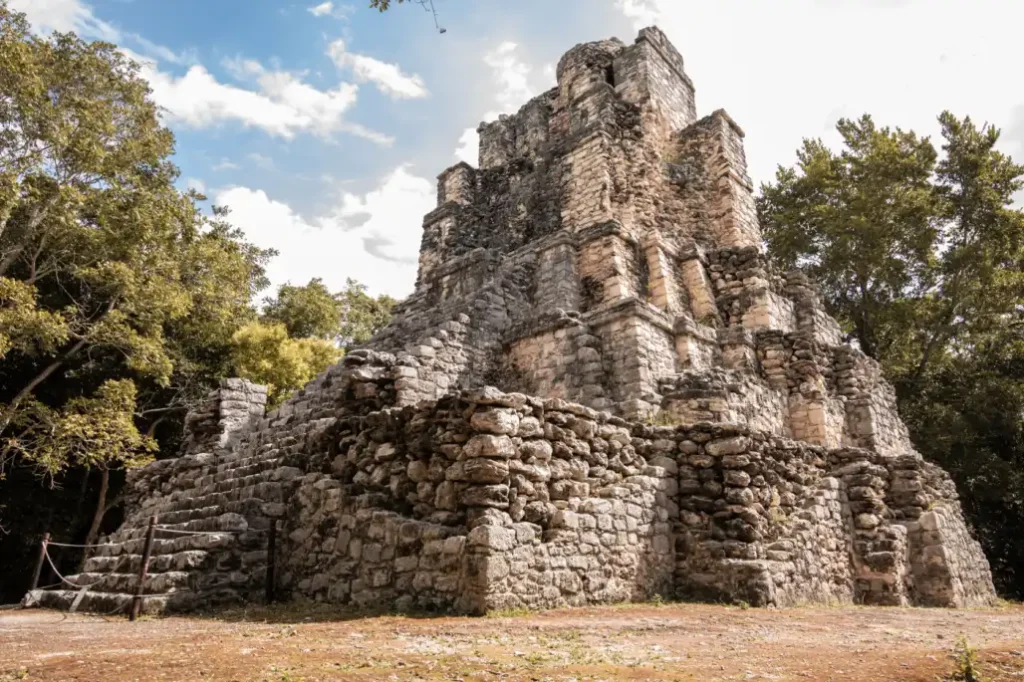Hallucinogenic Plants and Rituals

Surprisingly, scientists revealed hallucinogenic plants and rituals at an ancient Maya ball court. They believe that people likely used the plants in ceremonies to honor the gods.
Archaeologists were also studying a raised area in Yaxnohcah, an old Maya city in what’s now southeastern Mexico. Subsequently, they noticed a dark, organic spot at the bottom of the platform. By analyzing the soil there, researchers discovered different plants: a type of flower that causes hallucinations called xtabentun, lancewood, chili peppers, and jool leaves.
Experts from the University of Cincinnati suggest that the Maya people likely placed these plants in the arena as a gift to the gods around 80 C.E., when the structure was built. Lead scientist David Lentz compared this act to a modern ship christening, where people ask for good luck and protection from the gods for those using the new building.
The Maya had various ball games like pok-a-tok, which was a mix of soccer and basketball. Players aimed to throw a ball through a stone ring attached to the wall. The Maya considered these ball courts important and viewed them as sacred spaces, not just for fun.
Hallucinogenic Plants and Rituals
The bundle of hallucinogenic plants and rituals found at the arena had significant meaning to the Maya culture. Thus supporting the idea that they were part of a special offering. Xtabentun could cause hallucinations similar to LSD when eaten. The Maya used chili peppers for healing and may have placed them there to ward off sickness. Lancewood leaves served for pain relief and fought infections. The Maya likely wrapped the bundle with jool leaves, which they used to prepare ceremonial food.
Although we knew Maya people offered organic materials like plants, finding them in a tropical setting like this is rare. New methods like analyzing ancient plant DNA are helping us learn more about their ceremonies and customs.
